From the Archives ...
Fishing on the Wild Side
Fishing on the Wild Side
Mike Fry doesn’t only live on the Wild Side of Tasmania, but also goes fishing in probably the wildest boat ever to troll for trout—certainly in Tasmania.
When your mate says ‘What are you doing tomorrow, want to come up the Gordon for the night?’ it would be pretty hard to say anything else except “you bet” and start checking out your tackle box and packing your overnight bag. But if your mate was Troy Grining and he wanted to give his new 52ft, high speed cruiser a run across Macquarie Harbour, test the new onboard dory with a chance of landing a nice Gordon River Brown you would have to feel privileged. I didn’t say anything about getting on my hands and knees and kissing his feet…just having a lend of ya’ but I did feel very appreciative.
Please check all relevant authorities before fishing - www.ifs.tas.gov.au and dpipwe.tas.gov.au . Don't forget issuu.com/stevenspublishing for years of back issues !
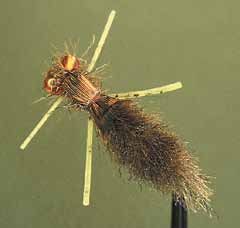 Presented from Issue 102, February 2013
Presented from Issue 102, February 2013
Mudeye time is anytime
Dragon fly larva, or Mudeyes, as we all know them, comes in two forms loosely known as the couta and bug (Corduliid) mudeyes. The couta is the larger of the two and many species, in fact close to 300 species, are found all over Australia. They are found in mountain streams, inland lakes, marshes and wetlands, in general. What species dominate your local waters? I guess it is up to you to work out; during summer you will see them flying around.
- Written by Stephen Smith - Rubicon Web and Technology Training
- Category: Fly Fishing
- Hits: 11161
 The Rock lobster season is closing this weekend
The Rock lobster season is closing this weekend
Information from http://dpipwe.tas.gov.au/sea-fishing-aquaculture/recreational-fishing
The recreational rock lobster season closes next Monday 1st May 2017 for:
- all rock lobster in the Eastern Region; and
- for females in the Western Region.
You must have rock lobster pots and rings off the water in the Eastern Region by midnight on Sunday 30th April. You cannot transit to or from the Western Region around Whale Head with rock lobsters or rock lobster gear on board.
The season for males in the Western Region remains open until 31 August 2017.
- Written by Stephen Smith - Rubicon Web and Technology Training
- Category: IFS, DPIPWE, MAST and Peak Bodies
- Hits: 5238
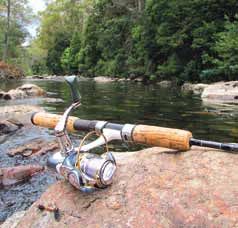 Presented from Issue 102, February 2013
Presented from Issue 102, February 2013
I began spinning for trout in 1965 in the Finnis River, Yundi, South. Australia, at the age of 19. Now at the age of 67 I am still loving it just as much, if not more than the first time. I now live at Sheffield, Tasmania and spin the rivers in the north, and in my opinion they are some of the best rivers in the State to fish. The Meander, Mersey, Leven, Iris, Vale, Emu and Flowerdale rivers are just a few of the many across the NorthWest to try.
- Written by Stephen Smith - Rubicon Web and Technology Training
- Category: Trout Fishing
- Hits: 7151
Presented from Issue 102
At an altitude of 1120ms above sea level Lake Mackenzie is one of the highest lakes you can drive to in Tassie. It is the upper most catchment on the Mersey/Forth Hydro scheme, its waters being dammed in the early seventies and diverted via canal and pipe to the Fisher River Power Station. The original Lake Mackenzie, Sandy Lake and Pine Marsh have since become Lake Mackenzie although for most summer months the original bodies of water are obvious.
Please refer here for current information.
http://www.ifs.tas.gov.au/about-us/publications/tasmanian-inland-fishing-code-2016-17
- Written by Stephen Smith - Rubicon Web and Technology Training
- Category: Other Lakes
- Hits: 10679
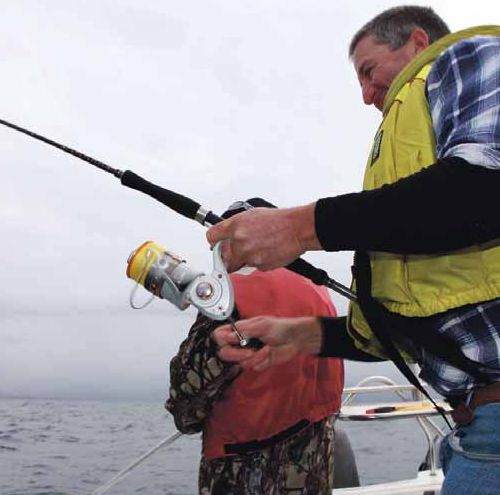 Presented from Issue 102
Presented from Issue 102
Spinning reels are coming to market in a new range and size every other day. The Tasmanian Angler is spoilt for choice and it’s a great problem to have. Egg beaters are what we love to call these types of reels and for good reason. We are finding them used for a greater range of fishing styles than just spinning.
- Written by Stephen Smith - Rubicon Web and Technology Training
- Category: Tackle, Boats and other Equipment
- Hits: 5743
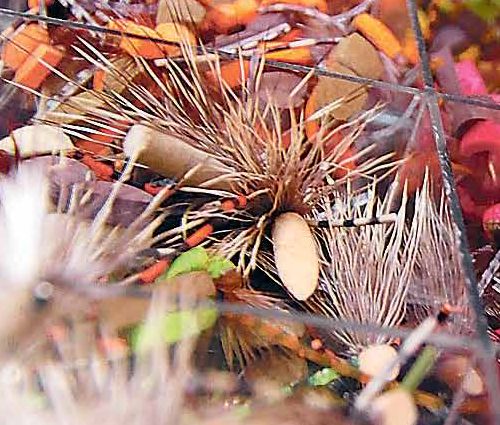 Presented from Issue 102
Presented from Issue 102
We all love the onset of summer, don’t we? Warm weather, cold beer and of course dry fly polaroiding for trout. But it’s not only the highland polaroiding that gets me excited at this time of year, because it is also closing in on hopper time on my favourite local streams.
As you wander the edge of your secret stream hotspot take a look in the long dry grass as you go, if you are kicking out a few of the resident grasshoppers then its time for a change of fly boxes. Tuck away that nymph/dry box and bring out the one loaded with big, fat foam flies. I guess you can also have some other hopper style patterns in there as well if you wish, not every fly has to have some foam in it, does it?.
- Written by Stephen Smith - Rubicon Web and Technology Training
- Category: Fly Fishing
- Hits: 5998
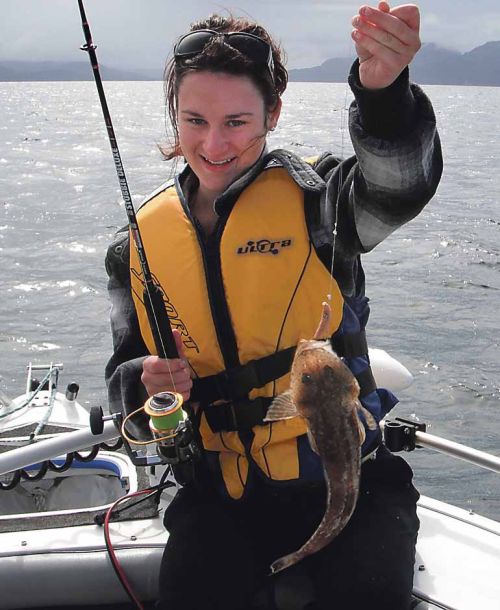 |
| Demi Lambert showing how it is done |
Presented from Issue 102
The humble Flathead is without doubt the Tasmanian anglers most sought after recreational saltwater species.
They can be found virtually anywhere there is a sandy bottom, from our estuaries to our bays, they are easy to catch and as an added bonus, are fabulous on the dinner table as well.
Mike Stevens has asked me to pen a few words together aimed at those that want to start targeting this species and perhaps aren’t really familiar on how to go about it, so here goes.
Species
There are three distinct species of flathead found around Tasmania and perhaps the most common is the southern sand flathead.
 They can grow to around 50cm in length and over 2 kg in weight, but due to them having to be around 16 years of age in order to reach this size; fish like these are the exception rather than the rule.
They can grow to around 50cm in length and over 2 kg in weight, but due to them having to be around 16 years of age in order to reach this size; fish like these are the exception rather than the rule.
Their colours vary depending on surroundings but they are usually a light brown or mottled pattern on top with a white belly.
- Written by Stephen Smith - Rubicon Web and Technology Training
- Category: Saltwater and Estuary Fishing
- Hits: 14885
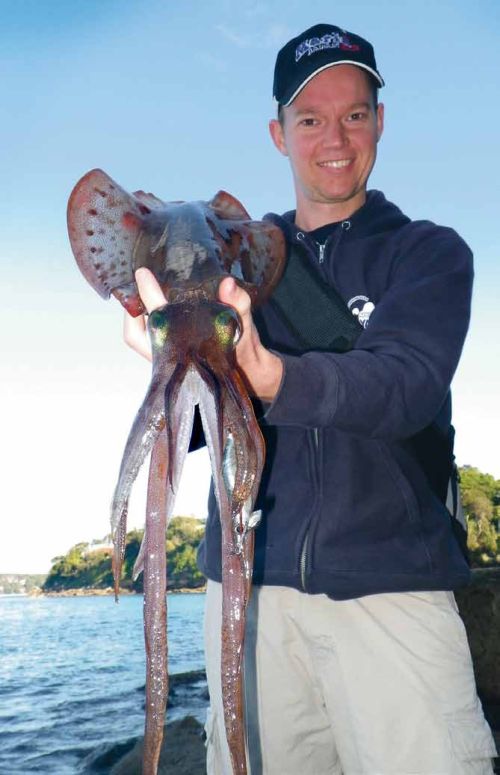 Presented from Issue 101
Presented from Issue 101
Squid fishing has become hugely popular in Tasmania in recent times and the start of spring and early summer heralds a new migration of the fish and tasty squid rings on the dinner plate. Whilst we have arrow and calamari squid in Tasmania the target species I am talking about here is calamari.
- Written by Stephen Smith - Rubicon Web and Technology Training
- Category: Saltwater and Estuary Fishing
- Hits: 21474
Read more: Squid Techniques and tips for better catches - Leroy Tirant
Presented from Issue 101
Fishing with other people is an interesting experience. Fishing with someone new can be like going on a first date, while a day out with a long time mate is more like putting on a comfortable pair of old shoes. A good thing about fishing with someone else is that you get to learn by watching, which can open your mind up to new ideas and techniques.
Something else that shows through is that how personality and character can influence flyfishing style. Do you know any two people who are exactly the same? You know what it’s like. Among your friends, you might have the energetic, extroverted type, who fills in all the awkward silences, the jester, or the quiet reserved one, who doesn’t say a lot, but when they do, everyone listens (or at least should).
My own circle of fishing buddies is a diverse bunch. We do share set of values and interests - otherwise we wouldn’t be friends I guess. A common love of rivers and streams, wild trout, dry flies, and of course, total catch and release binds us. There are some basics that we all adhere to in terms of technique, but there is a lot of variation in other than key areas. We all catch our share of fish, but don’t count them, certainly not in a “I got five, he got three” type of competitive way.
Here is an insight into my fishing mates, what I’ve learnt from them, and proof that there’s more than one way to skin a trout (so to speak)!
- Written by Stephen Smith - Rubicon Web and Technology Training
- Category: Trout Fishing
- Hits: 3767
Read more: Mates and Fish - Choose them carefully - Nick Taransky
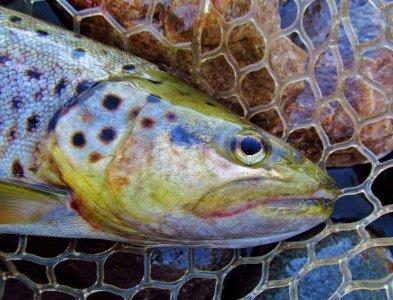 With a very light breeze blowing I was in two minds all day whether to go and have a session on the Mersey River or not. Finally around 2:30pm I decided I would go for a late spin session after all. I was in the river by 3:00 pm in what was really good conditions even though the river was running low and clear, not only that I would be fishing in full sun for the first 400 meters of river until I reached the shaded areas on the river. I started off using a hard body for a while without any sign of a trout before I changed to the gold Aglia spinner when I reached a 300 meter shallow fast water stretch of river that varied in depth from (4'' to 6'') 10cms to 20cms.
With a very light breeze blowing I was in two minds all day whether to go and have a session on the Mersey River or not. Finally around 2:30pm I decided I would go for a late spin session after all. I was in the river by 3:00 pm in what was really good conditions even though the river was running low and clear, not only that I would be fishing in full sun for the first 400 meters of river until I reached the shaded areas on the river. I started off using a hard body for a while without any sign of a trout before I changed to the gold Aglia spinner when I reached a 300 meter shallow fast water stretch of river that varied in depth from (4'' to 6'') 10cms to 20cms.
- Written by Stephen Smith - Rubicon Web and Technology Training
- Category: Mersey River
- Hits: 4144
Subcategories
Current TFBN
Click above for current issue content. The current issue of TFBN is extensive and topical. In Tackle Stores, Newsagents and by subscription.
Delivered to your door for $48 for 2 years (8 issues). To subscribe, send Mike $48 via www.paypal.com.au . (Basic instructions are here) The email is at Contact Us. Your address will be included from PayPal.
Or phone Mike with your c/c handy on 0418129949
Please ensure your details are correct, for Mike to organise delivery.
TFBN Newsletter Sign up Form
Why not submit an article ?
When you have finished for the day, why not have a brag about the ones that didn't get away! Send Mike an article on your fishing (Click here for contact details), and we'll get it published here. Have fun fishing - tasfish.com
Category Descriptions
Here is a list of all of the Article Categories. The number in Brackets, eg (13) is the number of articles. Click on Derwent River and all articles relating to the Derwent will be displayed in the central area.
Articles by Category
-
Rivers (3)
-
Saltwater and Estuary Fishing (149)
-
Kayak Fishing (34)
-
Lakes (1)
-
Great Lake (62)
-
Lake Leake (52)
-
Woods Lake (16)
-
Lake Augusta (11)
-
Huntsman Lake (13)
-
Lake Pedder and Gordon (10)
-
Lake Dulverton (5)
-
Lake Crescent (6)
-
Tooms Lake (10)
-
Lake Mackintosh (2)
-
Lake Barrington (5)
-
Little Lake (8)
-
Meadowbank Lake (5)
-
Lake King William (7)
-
Lake St Clair (2)
-
Western Lakes (12)
-
Arthurs Lake (35)
-
Lake Echo (7)
-
Four Springs (54)
-
Lake Sorell (7)
-
Lake Burbury (6)
-
Other Lakes (57)
-
Brushy Lagoon (18)
-
Little Pine Lagoon (5)
-
Penstock Lagoon (16)
-
Brumbys Creek (7)
-
-
Events (48)
-
Estuary Fishing (0)
-
Coastal Catches (46)
-
Super Trawler (46)
-
IFS, DPIPWE, MAST and Peak Bodies (435)
-
Commercial Interests (98)
-
Other (24)
-
TFBN Back Issues (8)
-
Fly Fishing (67)
-
Trout Fishing (250)
-
Meteorology and Weather (8)
-
Jan’s Flies (50)
-
Tuna Fishing and other Game Fishing (86)
-
Cooking Fish (19)
-
Fishing Information (1)
-
Fishing Books (8)
-
Videos (5)
-
Tackle, Boats and other Equipment (146)
-
World Fly Fishing Championship 2019 (2)
Popular Tags
windyty.com
Visit https://www.windyty.com/
Rubicon Web and Technology Training
Hello everyone, I thought it would be a good time to introduce myself.
My name is Stephen Smith and I have been managing the website tasfish.com since May 2009.
It has been an epic journey of learning and discovery and I am indebted to Mike Stevens for his help, support and patience.
I am developing a new venture Rubicon Web and Technology Training ( www.rwtt.com.au ). The focus is two part, to develop websites for individuals and small business and to train people to effectively use technology in their everyday lives.
Please contact me via www.rwtt.com.au/contact-me/ for further information - Stephen Smith.
From the Archives ... (last chance)
Tiny creeks and sea run trout - Christopher Bassano
Presented from Issue 105, August 2013
Christopher Bassano fishes over 250 days a year. This interview was recorded just before he headed off to fish for Australia in the World Fly Fishing Championships in Norway 14-17 August 2013.
I live on a small stream and at the start of the season I like to go off on a bit of a discovery mission and fish the headwaters of the creeks and rivers I feel an affinity with.
These small rivers include the St Pats, Meander, Forester, Little Forester and others. The further up you go on these rivers the clearer and lower the levels. They are often less affected by the rain and runoff and you get some good opportunities. Get as close to the source as you can and you will find some good dry fly fishing. Don’t limit yourself to those I have mentioned. Most headwaters will hold trout.
Read more ...


